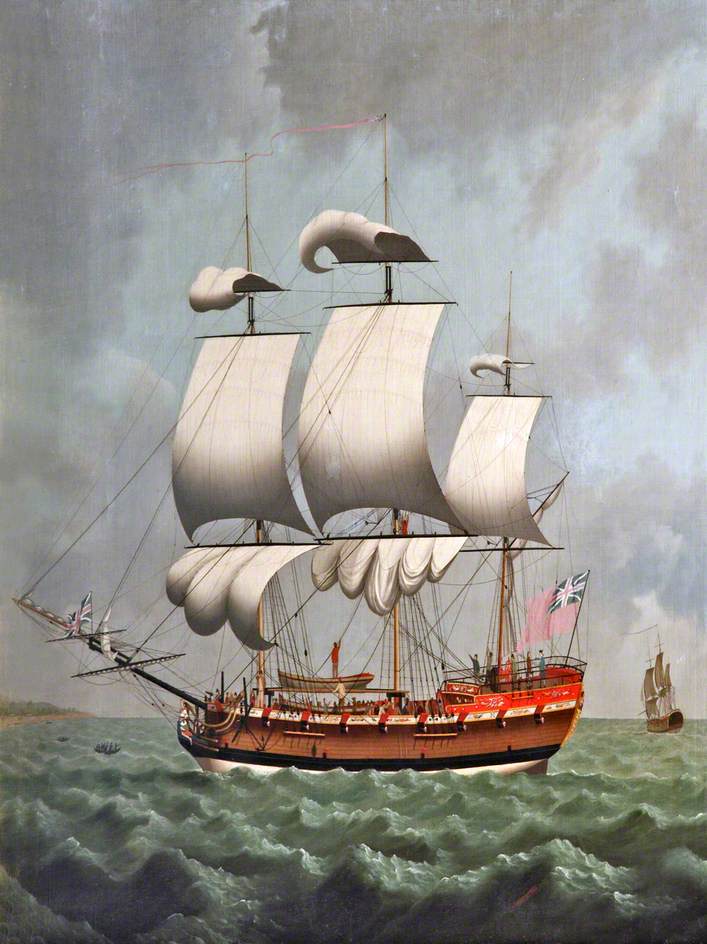By the sixteenth century
capitalism was growing in Europe. Over sea markets and colonies were becoming
popular and more competitive. This time was particularly beneficial for the
merchants and pirates. The merchants became a new class and had a strong
influence in public affairs. After Hawkins’ first voyage, the government
became interested in the Slave Trade. Agricultural developments were also a
part of the slave trade. New products being grown and produced over seas also
meant more customers. Sugar became one of the main products that came out of
English Slave Trade. According to The
Transatlantic Slave Trade: A History, “Sugar, almost unknown to medieval
Europe, began to be grown on plantations in the Mediterranean during the
thirteenth and fourteenth centuries, moved in the fifteenth century to the
Spanish and Portuguese islands in the Atlantic off the African coast, and migrated
to America in the sixteenth” (Rawley 9).
New ship technology started
developing in the sixteenth century as well. They needed to be equipped to sail
the vast Atlantic Ocean. Ships developed rigging and hull construction, which
enabled the ships to cope with Atlantic winds and currents. A quadrant was also
developed to make it possible to determine latitudes (Rawley 9).
Hawkins pretty much
enterprises slave trading in England. After having a successful voyage,
Queen Elizabeth is fascinated by the profits. Hawkins becomes the “head of a syndicate, and unofficial agent of the crown”(Rawley
131). In 1567, Hawkins set out on another voyage, but this time as an owner of
one of the six vessels; the Queen owned two others. His second cousin, Sir
Francis Drake was also with Hawkins on this journey. During this voyage,
Hawkins became involved in a local African war. John Hawkins himself in, The Hawkins’ voyages during the reigns of
Henry VIII, Queen Elizabeth, and James I, writes an account of this
experience,
There
came to us a Negros, sent from a King, oppressed by other Kings his neighbors,
desiring our aide, with promise, that as many Negroes as by these wares might
be obtained, as well of his part, as of ours, should be at our pleasure:
whereupon we concluded to give aide, and sent 120 of our men, which the
fifteenth of January, assaulted a town of the Negroes of our Allies
adversaries, which had in it 8000 Inhabitants (Hawkins 70).
Thomas Cavendish (1560-92), Sir Francis Drake (1540?-96) and Sir John Hawkins (1532-95) |
After this brutal encounter,
Hawkins looses six men and forty more were injured, but gains about 500 slaves
and other merchandise (Hawkins 72). Hawkins and his fleet of six
ships, carrying hundreds of slaves, embark on the journey to the Spanish
Americas. Here, he will have a very close encounter with a strong Spanish
fleet…
Markham, Clements R., and John Hawkins. "The 3rd
Unfortunate Voyage." In The Hawkins' Voyages during the Reigns of Henry
VIII, Queen Elizabeth, and James I, 70-80. Surrey [England: London :
Printed for the Hakluyt Society, 1878.
Rawley, James A., and Stephen D. Behrendt. 2005. The
Transatlantic Slave Trade : A History. Lincoln: University of Nebraska
Press, 2005. eBook Collection (EBSCOhost), EBSCOhost (accessed
November 12, 2015).
SLO #5,6,7


No comments:
Post a Comment